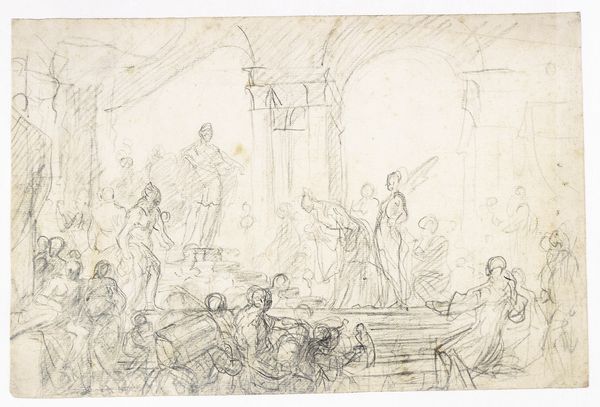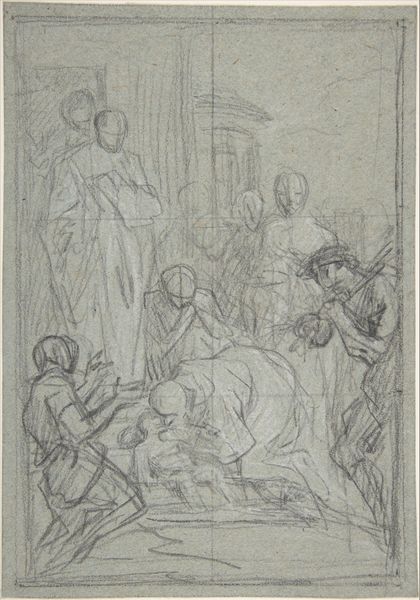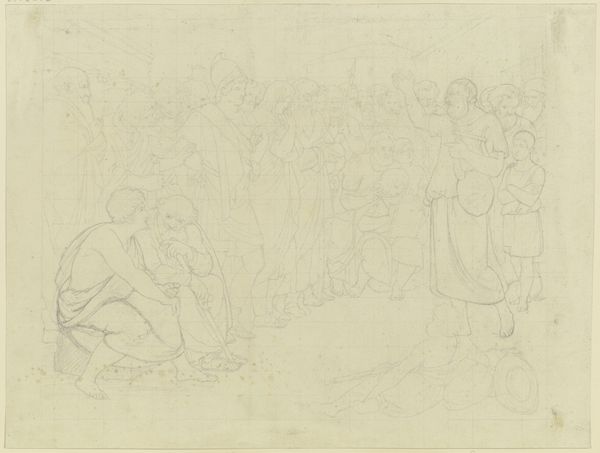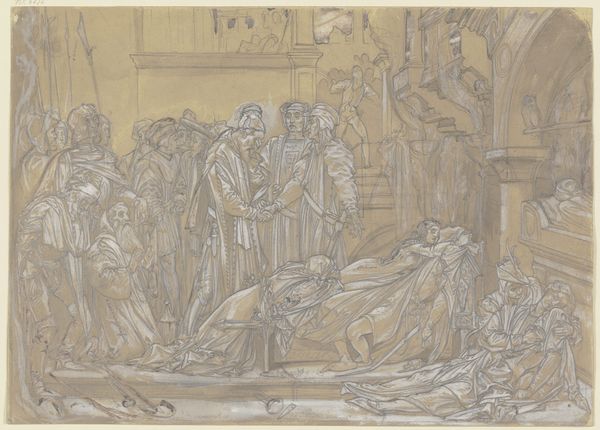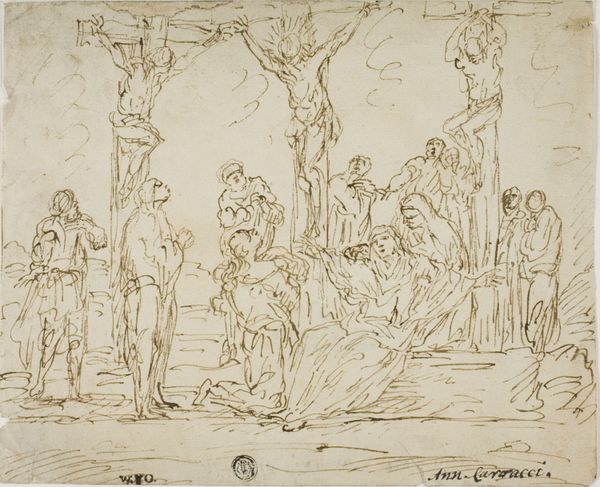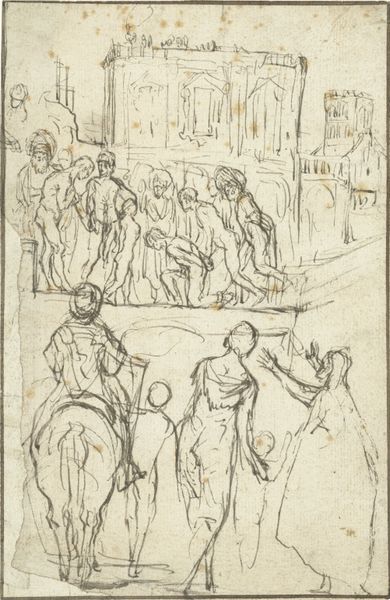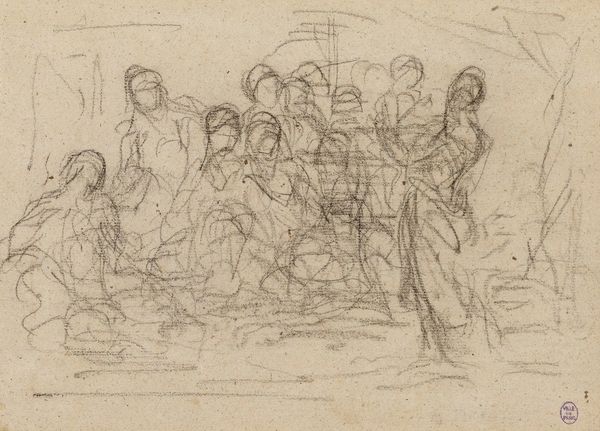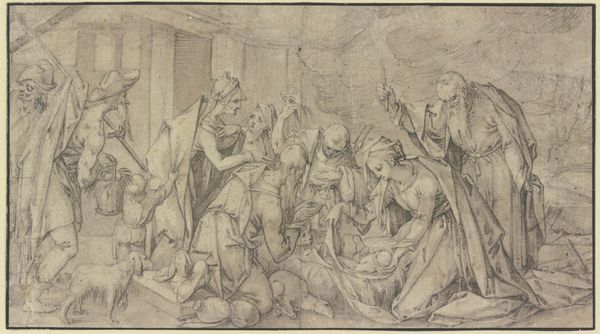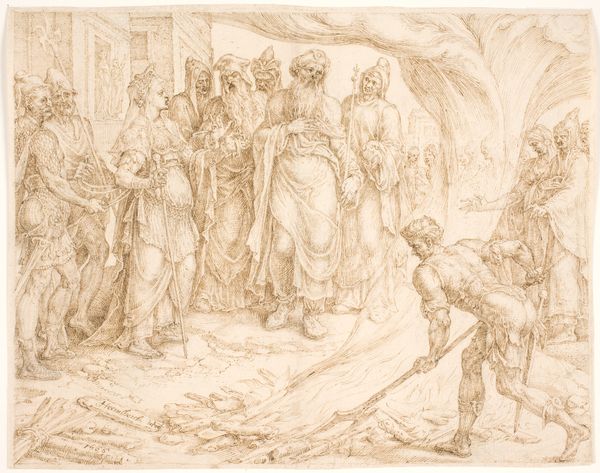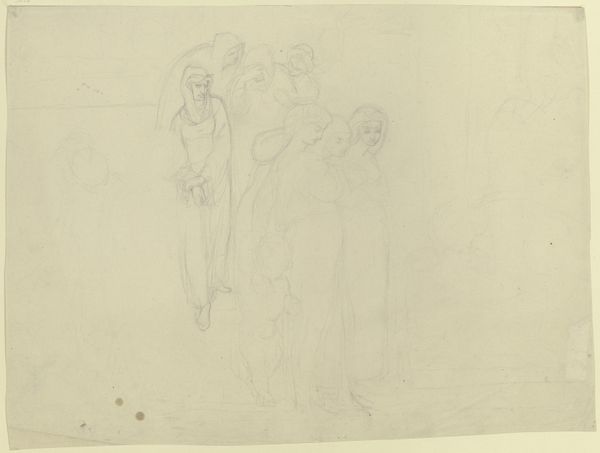
drawing, paper, ink
#
drawing
#
narrative-art
#
landscape
#
figuration
#
paper
#
ink
#
german
#
romanticism
#
history-painting
#
academic-art
Copyright: Public Domain
Curator: What a rush of bodies and limbs! It's all captured so delicately in ink on paper, even the frenzy of it all. Editor: Indeed! This drawing, titled "The Torch Relay," was created around 1832 by Philipp Veit, a German artist deeply involved with the Nazarene movement, and it resides here with us at the Städel Museum. Veit was really invested in injecting this sense of spiritual renewal into art. Curator: You feel it, don’t you? That almost desperate sense of movement. The figures are like ghosts, caught in mid-stride, that yearning… are they yearning for the future, or running from the past? Maybe both! Editor: Absolutely. Veit and the Nazarenes sought to revive honesty and spirituality, finding inspiration in early Renaissance art. This torch relay becomes symbolic, right? A transfer of knowledge or ideals—an echo of classical themes, perhaps hinting at something purer that society's strayed from. Curator: Precisely! The relay isn't just a physical race, it’s a race against time, against corruption. And look at how the faces, barely sketched, still convey such determination. Almost unsettling how familiar that drive is, centuries later. Editor: What strikes me is Veit’s role as director. These works, displayed publicly, actively worked to define what it meant to be "German" or "moral" in the 19th century. It places artwork smack dab in the middle of building cultural and political narratives. Curator: So you are saying that what looks to me like such raw passion on display is actually manufactured...constructed! Art as propaganda. Editor: Well, consider art’s reception...the elite art world and who gets to decide "good" taste. Then Veit's attempt becomes a bit subversive. He's drawing on classical and religious imagery accessible to almost anyone and democratizing historical painting. Curator: I see… so it's not so much propaganda, but more a re-imagining of it. Editor: Precisely. Looking at this artwork has shifted how I think about the artist's role in shaping, rather than dictating, cultural norms. Curator: It’s a nice reminder that even something as outwardly historical as this image, has echoes still in the current struggles we face in the present. That drive is really, ultimately, human, isn’t it?
Comments
No comments
Be the first to comment and join the conversation on the ultimate creative platform.
